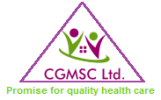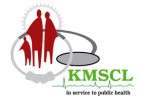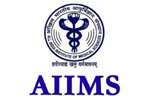One of the best Surgical Disposables company. I am dealing with them for the past 5 years,
their products are world-class. Their approach to trade is professional. All the best wishes to
them.
Safeguarding Health and Environment: A Deep Dive into Biomedical Waste Management
- By: Plasti Surge Industries

Biomedical waste, also known as medical waste, encompasses a broad spectrum of discarded materials generated by healthcare facilities, laboratories, and research institutions. It includes everything from used syringes and contaminated dressings to expired medications and discarded laboratory cultures. Proper management of biomedical waste is of paramount importance to safeguard public health and the environment. In this blog, we will delve into the intricate world of biomedical waste management, exploring its significance, categories, regulations, handling techniques, disposal methods, and the pivotal role played by healthcare facilities. Join us on this journey to understand how responsible biomedical waste management is for the well-being of our communities and ecosystems.
Proper biomedical waste management is essential for several compelling reasons. First and foremost, it is critical to prevent the spread of infections and diseases, as many medical wastes carry harmful pathogens. Furthermore, responsible management helps protect healthcare workers, waste handlers, and the general public from potential hazards. Additionally, it safeguards the environment by preventing contamination of soil, water, and air, all of which can result from improper disposal. Compliance with biomedical waste regulations also ensures the ethical and legal responsibilities of healthcare institutions, contributing to overall public health and safety.
Biomedical Waste Categories and Segregation
|
Biomedical Waste Category |
Description |
Segregation Guidelines |
|
Infectious Waste |
Waste containing pathogens |
Keep separate from other waste streams, use red bags or containers. |
|
Sharps Waste |
Needles, syringes, and other sharps |
Use puncture-resistant containers, segregate from other waste. |
|
Pharmaceutical Waste |
Expired or unused medications |
Isolate and dispose of through approved pharmaceutical programs. |
|
Anatomical Waste |
Human or animal tissues and organs |
Store in leak-proof containers, separate from general waste. |
|
Chemical Waste |
Laboratory and disinfectant chemicals |
Segregate based on compatibility, label containers correctly. |
|
Radioactive Waste |
Materials emitting ionizing radiation |
Store securely, comply with radioactive waste disposal rules. |
|
General Non-Hazardous Waste |
Non-infectious, non-sharp, non-pharmaceutical waste |
Dispose of in standard waste containers, if permitted. |
These categories help ensure safe disposal and minimize the risks associated with biomedical waste.
Regulations and Guidelines for Biomedical Waste Management
Biomedical Waste Management is subject to strict regulations and guidelines to safeguard public health and the environment. These regulations vary by country and region, but they generally include the following key aspects:
-
Segregation and Color Coding: Proper segregation of biomedical waste into categories (infectious waste, sharps, pharmaceutical waste, etc.) is essential. Each category often has specific color-coding requirements for bags or containers to ensure easy identification.
-
Storage and Labeling: Biomedical waste must be stored in leak-proof and puncture-resistant containers. These containers should be clearly labeled with biohazard symbols and information about the waste category.
-
Transportation: Regulations dictate the safe transportation of biomedical waste from healthcare facilities to disposal sites. This includes securing waste containers to prevent spillage during transit.
-
Treatment and Disposal: Biomedical waste may undergo treatment processes such as autoclaving, incineration, or chemical treatment to render it non-infectious before final disposal. Proper disposal in approved facilities is crucial.
-
Documentation: Maintaining accurate records of biomedical waste generation, storage, transportation, and disposal is typically a legal requirement. These records aid in tracking and ensuring compliance.
-
Training and Awareness: Healthcare personnel and waste handlers must receive training on handling biomedical waste safely. This training includes the use of personal protective equipment and adherence to protocols.
-
Penalties for Non-Compliance: Regulations often outline penalties for healthcare facilities or entities that do not comply with biomedical waste management guidelines. These penalties can be financial or legal in nature.
-
Regular Inspections: Regulatory authorities may conduct regular inspections of healthcare facilities to assess compliance with biomedical waste management rules.
-
Environmental Impact Assessment: Some regulations require an environmental impact assessment to evaluate the potential environmental effects of biomedical waste management practices.
It's essential for healthcare facilities and waste management companies to stay updated on these regulations and guidelines to ensure the proper handling and disposal of biomedical waste, ultimately protecting public health and the environment.
Biomedical Waste Handling and Storage
Proper handling and storage of biomedical waste are critical aspects of biomedical waste management. Healthcare facilities generate a significant volume of biomedical waste daily, including items like used needles, contaminated materials, and expired pharmaceuticals. To ensure the safety of healthcare workers, patients, and the environment, stringent protocols must be followed.
Handling: Healthcare personnel dealing with biomedical waste should receive specialized training. They must use personal protective equipment (PPE), such as gloves and gowns, to minimize exposure to potentially infectious materials. Waste handlers should adopt practices like no-touch techniques when segregating, bagging, or moving biomedical waste to prevent accidents and contamination.
Storage: Biomedical waste must be stored at the point of generation in leak-proof and puncture-resistant containers. These containers are typically color-coded according to waste categories, making it easy to identify and segregate waste. Storage areas should be secure, well-ventilated, and equipped with safety measures to prevent unauthorized access. Regular inspection and maintenance of storage facilities are essential to ensure safety and compliance with regulations.
In summary, the proper handling and storage of biomedical waste are essential to protect healthcare workers, patients, and the environment from the risks associated with infectious and hazardous materials. Adhering to established protocols and guidelines is crucial in biomedical waste management.
Treatment and Disposal Methods
Biomedical waste poses unique challenges in terms of treatment and disposal due to its potential hazards and infectious nature. The management of biomedical waste involves several methods to ensure safety and environmental protection:
-
Incineration: Incineration is one of the primary methods for treating biomedical waste. It involves burning waste materials at high temperatures, reducing them to ashes. This process is effective in destroying pathogens and reducing the volume of waste. However, it requires advanced incineration facilities with air pollution control systems to minimize emissions.
-
Autoclaving: Autoclaving uses high-pressure steam to sterilize biomedical waste. This method is effective in killing microorganisms and rendering the waste safe for disposal. Autoclaved waste can then be landfilled or subjected to other disposal methods.
-
Microwave Treatment: Microwaves can be used to disinfect biomedical waste by heating it to high temperatures. This method is efficient and environmentally friendly, as it does not produce harmful emissions.
-
Chemical Treatment: Some biomedical waste, like chemical waste, can be treated with specific chemicals to neutralize hazards. This method is commonly used for pharmaceutical waste and chemical reagents.
-
Shredding and Disposal: Sharps waste, such as needles and syringes, can be mechanically shredded to reduce their volume. After shredding, they are often disposed of in puncture-resistant containers or landfills.
-
Landfilling: Non-hazardous biomedical waste that has been properly treated and rendered safe can be disposed of in secure landfills designed for biomedical waste. These landfills have liners and safeguards to prevent contamination of soil and groundwater.
-
On-Site Treatment: Some healthcare facilities have on-site treatment systems that can process biomedical waste within the premises, reducing the need for off-site transportation.
-
Recycling: Some biomedical waste materials, like plastics and glass, can be recycled if they are uncontaminated and properly cleaned.
It's crucial for healthcare facilities and waste management authorities to follow local regulations and guidelines for biomedical waste treatment and disposal to protect public health and the environment. Proper segregation, labeling, and documentation are essential steps in the process to ensure the safe management of biomedical waste.
Role of Healthcare Facilities in Biomedical Waste Management
.jpg) Healthcare facilities play a pivotal role in the effective management of biomedical waste. They are the primary generators of such waste and are responsible for ensuring its safe collection, segregation, and disposal. Healthcare staff must be trained to segregate waste into appropriate categories, including sharps, infectious waste, pharmaceutical waste, and more. Proper labeling and storage of biomedical waste within the facility are crucial steps to prevent cross-contamination. Healthcare facilities must also collaborate with licensed biomedical waste disposal services to ensure that waste is transported, treated, and disposed of following stringent regulations. Compliance with guidelines not only protects the environment but also safeguards public health.
Healthcare facilities play a pivotal role in the effective management of biomedical waste. They are the primary generators of such waste and are responsible for ensuring its safe collection, segregation, and disposal. Healthcare staff must be trained to segregate waste into appropriate categories, including sharps, infectious waste, pharmaceutical waste, and more. Proper labeling and storage of biomedical waste within the facility are crucial steps to prevent cross-contamination. Healthcare facilities must also collaborate with licensed biomedical waste disposal services to ensure that waste is transported, treated, and disposed of following stringent regulations. Compliance with guidelines not only protects the environment but also safeguards public health.
Challenges and Solutions in Biomedical Waste Management
|
CHALLENGES |
SOLUTIONS |
|
Inadequate Segregation: Lack of proper waste categorization can lead to contamination |
Training and Awareness: Healthcare staff should receive training on waste segregation protocols. |
|
Improper Storage: Incorrect storage practices can pose health risks |
Secure Containers: Use secure, labeled containers for waste storage. |
|
Transportation Risks: Accidents during waste transport can lead to spillage. |
Safe Transportation: Use specialized vehicles and trained personnel for transport. |
|
Lack of Compliance: Non-compliance with regulations can result in penalties. |
Regular Audits: Conduct regular audits to ensure compliance. |
|
Environmental Impact: Improper disposal harms the environment. |
Eco-friendly Methods: Adopt eco-friendly disposal techniques. |
|
Cost Management: Proper disposal can be expensive |
Efficiency Measures: Optimize waste management processes to reduce costs. |
Best Practices for Effective Biomedical Waste Management
Effective biomedical waste management is crucial to protect public health and the environment. Here are some best practices:
-
Waste Segregation: Properly segregate biomedical waste at the source into different categories like infectious, hazardous, and non-hazardous.
-
Safe Collection: Use color-coded containers and labels to clearly identify the type of waste being collected.
-
Secure Storage: Ensure waste is stored in leak-proof, puncture-resistant, and tamper-evident containers in designated storage areas.
-
Training and Awareness: Regularly train healthcare staff on waste segregation, handling, and disposal protocols.
-
Transportation Safety: Use specialized vehicles and trained personnel for the safe transportation of biomedical waste.
-
Compliance: Adhere to local and national regulations and conduct regular audits to ensure compliance.
-
Environmentally Friendly Disposal: Choose eco-friendly disposal methods such as autoclaving, incineration, or microwave treatment.
-
Cost Efficiency: Optimize waste management processes to reduce costs while maintaining safety standards.
-
Documentation: Maintain accurate records of waste generation, collection, and disposal for transparency and accountability.
-
Emergency Preparedness: Develop and practice emergency response plans for accidents or spills.
By following these best practices, healthcare facilities can effectively manage biomedical waste, reducing risks to public health and the environment.
Case Studies of Successful Biomedical Waste Management Programs
Case Study 1: Apollo Hospitals, India
- Background: Apollo Hospitals, a leading healthcare provider in India, generates a substantial amount of biomedical waste daily.
- Solution: They implemented a comprehensive waste management program that includes waste segregation at the source, the use of color-coded bins, and staff training.
- Innovation: Apollo Hospitals adopted eco-friendly waste treatment methods like autoclaving and shredding to minimize environmental impact.
- Results: The hospital achieved a significant reduction in waste volume, lowered disposal costs, and reduced the risk of infection. They also ensured compliance with the Biomedical Waste Management Rules, 2016.
Case Study 2: Mount Sinai Hospital, New York
- Background: Mount Sinai Hospital, a prominent medical center in the U.S., handles a large amount of biomedical waste.
- Solution: They established a waste management team that focuses on waste reduction, segregation, and recycling. They also engage in community education.
- Innovation: The hospital initiated a "Greening the OR" program, emphasizing waste reduction and recycling in operating rooms.
- Results: Mount Sinai Hospital reduced its biomedical waste by 5% and its general waste by 15%. This not only saved costs but also reduced the hospital's environmental footprint.
These case studies demonstrate that effective biomedical waste management programs, including waste reduction, segregation, and eco-friendly disposal methods, not only ensure safety and compliance but also yield cost savings and environmental benefits.
The Future of Biomedical Waste Management
The future of biomedical waste management holds promising advancements driven by technology, sustainability, and stricter regulations. With growing concerns about environmental impact, healthcare facilities are likely to adopt more eco-friendly waste treatment methods. Automation and data-driven solutions will enhance efficiency, tracking, and compliance. Collaborative efforts between healthcare institutions, waste disposal services, and regulatory bodies will lead to standardized practices and better enforcement. As we move forward, responsible biomedical waste management will continue to be a critical aspect of ensuring both public health and environmental well-being. To explore innovative solutions in biomedical waste management, visit https://www.psidispo.com/.
Conclusion
Effective biomedical waste management is not just a healthcare requirement; it's a commitment to safeguarding public health and preserving our environment. By adhering to regulations, adopting best practices, and embracing innovative technologies, we can minimize the risks associated with biomedical waste and promote a healthier, safer future for all.
Now, it's time to take action. Whether you're a healthcare professional, waste management provider, or policymaker, you play a crucial role in ensuring proper biomedical waste management. Stay informed, advocate for responsible practices, and explore advanced solutions. Together, we can create a world where biomedical waste is managed efficiently, protecting both human health and our precious planet.
For comprehensive solutions and resources in biomedical waste management, visit https://www.psidispo.com/. Let's work together for a cleaner, healthier future.
One of the best companies to partner with. Very responsive and best product quality.
Good experience and corporation for many years. Timely services are provided.
We have been associated with PSI since more than 20 years now. They have superior products, prompt service & courteous people. Using PSI’s products in turn makes our customer happy and helps us to do more business. Overall truly delighted with their customer service.














_iCEz.jpeg)
 +91-7798800781
+91-7798800781


4xwz.jpg)



